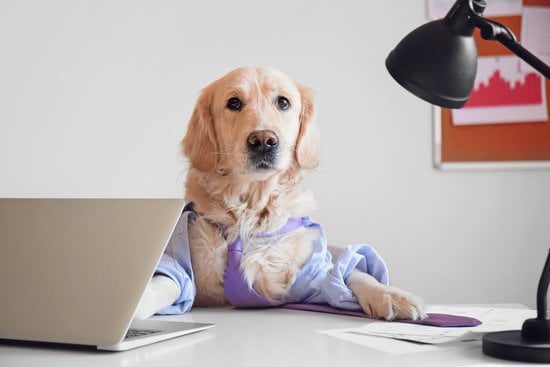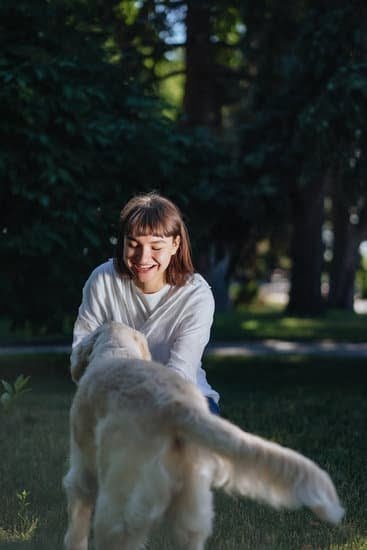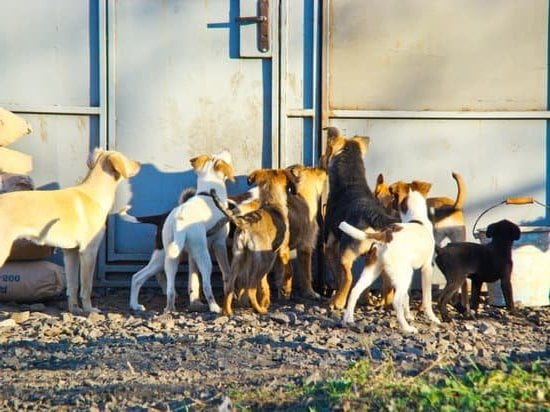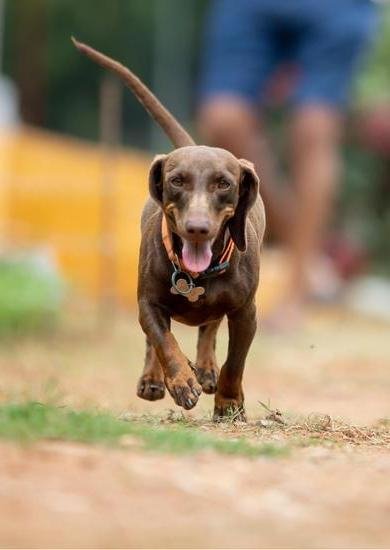Are you wondering how to train your dog to hold its pee? Understanding your dog’s urination needs is essential for successful potty training. In this section, we will discuss the normal frequency of a dog’s need to pee and the factors that may affect a dog’s ability to hold its pee. By gaining insight into your dog’s natural behavior, you can tailor your training approach to effectively teach them to control their bladder.
Dogs have varying bathroom needs depending on their age, size, and breed. It is important to recognize these differences and establish a routine for potty breaks that meets your dog’s specific needs. Consistent potty breaks are crucial for training, as they help reinforce good habits and prevent accidents in the house. By creating a schedule for regular bathroom breaks, you can set up your dog for success in learning to hold its pee.
Positive reinforcement is a powerful tool in training dogs, including teaching them to hold their pee. Using treats and rewards can help reinforce desired behavior and motivate your dog to control their bladder. Additionally, developing a training plan tailored to your dog’s individual needs will increase the likelihood of success in potty training. By understanding the principles of positive reinforcement and applying them consistently, you can effectively teach your dog to hold its pee.
Establishing a Routine for Potty Breaks
When training your dog to hold its pee, it is important to establish a consistent routine for potty breaks. This will not only help in reinforcing the desired behavior but also regulate your dog’s bathroom habits. Here are some tips on how to establish a routine for potty breaks:
- Importance of consistent potty breaks for training: Dogs thrive on routine, so it’s crucial to take your dog out at the same times every day. Consistency will help your dog understand when it’s time to go outside to relieve itself.
- Creating a schedule for regular bathroom breaks: Take note of your dog’s natural bathroom schedule and plan regular potty breaks around those times. Typically, puppies need to go out more frequently, while adult dogs can hold their pee longer.
By following a set routine for potty breaks, you can effectively teach your dog when and where it should urinate, leading to success in the overall training process.
Remember that patience and persistence are key when establishing a routine for potty breaks. It may take time for your dog to adjust to the new schedule and understand what is expected of them. With consistent training and positive reinforcement, your furry friend will eventually learn how to hold its pee and follow the established routine.
Positive Reinforcement Training Methods
When it comes to training your dog to hold its pee, positive reinforcement is key. Using treats and rewards to reinforce desired behavior can be incredibly effective in potty training your furry friend. By associating the act of holding their pee with something positive, such as a tasty treat or verbal praise, your dog will be more motivated to hold it in.
To successfully implement positive reinforcement training methods, it’s important to have a clear and consistent training plan. This plan should outline specific times for potty breaks and how you will reward your dog for successfully holding their pee. Here are some tips for using positive reinforcement effectively:
– Use high-value treats that your dog loves to create a strong incentive for holding their pee.
– Immediately reward your dog with a treat and enthusiastic praise every time they successfully hold their pee for an extended period.
– Be patient and consistent in your approach, as it may take some time for your dog to fully understand what is expected of them.
Remember that each dog is different, so it’s important to tailor your training methods to fit your individual pet’s needs and learning style. With the right approach and plenty of patience, you can effectively train your dog to hold its pee through positive reinforcement.
–
Before starting the potty training process with positive reinforcement, it’s essential to develop a clear training plan. This plan should include specific goals, timelines, and methods for rewarding desired behavior. Here are some key steps to consider when creating a training plan:
1. Establish a regular potty break schedule: Determine how often you will take your dog out for bathroom breaks based on their age, size, and breed.
2. Set achievable goals: Start with small increments of time that gradually increase as your dog becomes more accustomed to holding their pee.
3. Choose appropriate rewards: Select treats or rewards that are enticing enough to motivate your dog but also healthy and appropriate for their diet.
4. Be consistent: Stick to the same routine every day so that your dog understands what is expected of them.
By creating a detailed training plan, you can effectively implement positive reinforcement methods and set clear expectations for both you and your furry companion on how to train them to hold their pee.
Crate Training for Control
Utilizing a Crate for Potty Training
Crate training can be an effective tool in teaching your dog to hold its pee. Dogs have a natural instinct to avoid soiling their living spaces, and a crate can support this instinct by providing a confined area for your dog to rest in. When properly introduced and used, a crate can help in controlling your dog’s urination habits and fostering bladder control.
Ensuring a Comfortable and Safe Environment for Your Dog
It is essential to ensure that the crate is a comfortable and safe space for your dog. The crate should be appropriately sized, allowing your dog to stand up, turn around, and lie down comfortably. Adding bedding or blankets can make the crate cozy, encouraging your dog to view it as a den rather than a punishment. Additionally, keep the crate in an area where the family spends time so that your dog doesn’t feel isolated or neglected.
Gradual Introduction and Positive Reinforcement
To train your dog to hold its pee using a crate, gradually introduce it to the concept of being crated. Start with short periods of time and gradually increase the duration as your dog becomes more comfortable. Always use positive reinforcement by offering treats or praise when your dog enters the crate voluntarily. This will help create positive associations with the crate and reduce anxiety about being confined.
Incorporating crate training into your overall potty training plan can be an effective way to teach your dog bladder control. With patience, consistency, and positive reinforcement, you can help your furry friend learn how to hold its pee until appropriate bathroom breaks.
Monitoring Water Intake
Regulating your dog’s water intake can play a crucial role in training them to hold their pee. By controlling when and how much water your dog drinks, you can help reduce the frequency of urination, making it easier for them to hold it for longer periods.
One effective method is to schedule water breaks for your dog at specific times throughout the day. For example, you can give your dog access to water first thing in the morning, then again mid-morning, early afternoon, and so on. By managing their water consumption in this way, you can predict when they will need to go out for a potty break and plan accordingly.
It’s important not to limit your dog’s access to water entirely, as adequate hydration is key to their overall health. Instead, focus on controlling the timing and amount of water they drink.
Additionally, remember that if your dog has been exercising or it’s particularly hot outside, they will need more frequent access to water. By striking a balance between controlled intake and providing enough hydration for your pet, you can effectively manage their urination needs while also promoting good health.
Here are some helpful tips for success:
- Designate specific times for giving your dog access to water
- Monitor any additional sources of water in the house
- Adjust the timing of water breaks based on exercise or weather conditions
Addressing Potential Health Issues
Dogs, like humans, may experience urinary issues that can affect their ability to hold their pee. It is important for dog owners to be aware of the signs of potential health issues that may contribute to a lack of urinary control in their pets.
Recognizing Signs of Urinary Problems
It’s crucial for dog owners to pay attention to any changes in their pet’s urination habits. Signs of potential urinary problems may include frequent accidents in the house, straining while urinating, blood in the urine, or signs of discomfort while trying to hold its pee. Additionally, if a dog suddenly begins having accidents despite previously being well-trained, it could be an indication of an underlying health issue.
Seeking Veterinary Help
If a dog is showing signs of urinary issues or struggles to hold its pee despite training efforts, it is important to seek veterinary help. A veterinarian can perform a thorough examination and diagnostic tests to determine if there are any underlying health conditions contributing to the problem. Conditions such as urinary tract infections, bladder stones, or incontinence issues could be identified through a vet’s evaluation.
By addressing potential health issues that may affect a dog’s ability to hold its pee, owners can ensure that any necessary medical treatment is provided, and they can also work on potty training with a greater understanding of their pet’s specific needs.
Consistency and Patience in Training
Training your dog to hold its pee requires a great deal of consistency and patience. Just like with any type of training, it is important to set realistic expectations and understand that every dog will have a different learning curve. Remember to be patient and persistent throughout the process.
One of the key factors in successfully training your dog to hold its pee is consistency. This means establishing a routine for potty breaks and sticking to it. Consistent potty breaks will help your dog understand when it is appropriate to relieve itself, making it easier for them to hold their pee when needed.
In addition to consistency, patience is also crucial when training your dog. It’s essential to remain calm and patient, especially during setbacks or accidents. Avoid scolding or punishing your dog for accidents, as this can be counterproductive. Instead, use positive reinforcement techniques such as treats and rewards to encourage and reinforce the desired behavior.
Another important aspect of successful potty training is creating a comfortable and safe environment for your dog. Utilizing a crate can be an effective tool for control during the training process. It provides a designated space for your dog while also assisting in teaching them to hold their pee until they are taken outside.
| Training Factors | Importance |
|---|---|
| Consistency | Establishing a routine helps dogs understand when it’s appropriate to pee |
| Patience | Remaining calm and patient during setbacks encourages positive progress |
| Crate Training | Creating a comfortable environment with designated space helps dogs learn control |
Tips for Success and Troubleshooting
In conclusion, training your dog to hold its pee is a process that requires patience, consistency, and understanding of your pet’s needs. By following the tips and guidelines outlined in this article, you can help your dog develop the ability to control its bladder and minimize accidents in the house.
Establishing a routine for potty breaks is crucial, as it helps your dog learn when and where it is appropriate to relieve itself. Using positive reinforcement methods, such as treats and rewards, can also be an effective way to encourage desired behavior. Additionally, crate training can provide a safe and comfortable environment for your dog while also aiding in potty training.
It’s important to monitor your dog’s water intake and seek veterinary help if you suspect any underlying health issues that may be affecting its urinary control. And above all, consistency and patience are key.
Each dog has its own learning curve, so it’s essential to be understanding and persistent throughout the training process. With time and dedication, you can successfully train your dog to hold its pee and create a happy and stress-free environment for both you and your pet.
Frequently Asked Questions
How Do I Train My Dog Not to Pee Overnight?
Training a dog not to pee overnight requires consistency and patience. Start by taking away water a few hours before bedtime and taking your dog outside right before going to sleep. With time and positive reinforcement, they will learn to hold it in.
How Long Can a Dog Hold Its Pee?
On average, an adult dog can hold its pee for 8-10 hours, but this ultimately depends on their age, size, health, and how much water they’ve had. Puppies and senior dogs will need more frequent bathroom breaks.
At What Age Can a Puppy Control Its Bladder?
Puppies typically gain control of their bladder between 4 to 6 months of age. However, this can vary depending on the breed and individual dog. It’s important to be patient during this process as accidents are expected while they learn.

Welcome to the blog! I am a professional dog trainer and have been working with dogs for many years. In this blog, I will be discussing various topics related to dog training, including tips, tricks, and advice. I hope you find this information helpful and informative. Thanks for reading!





